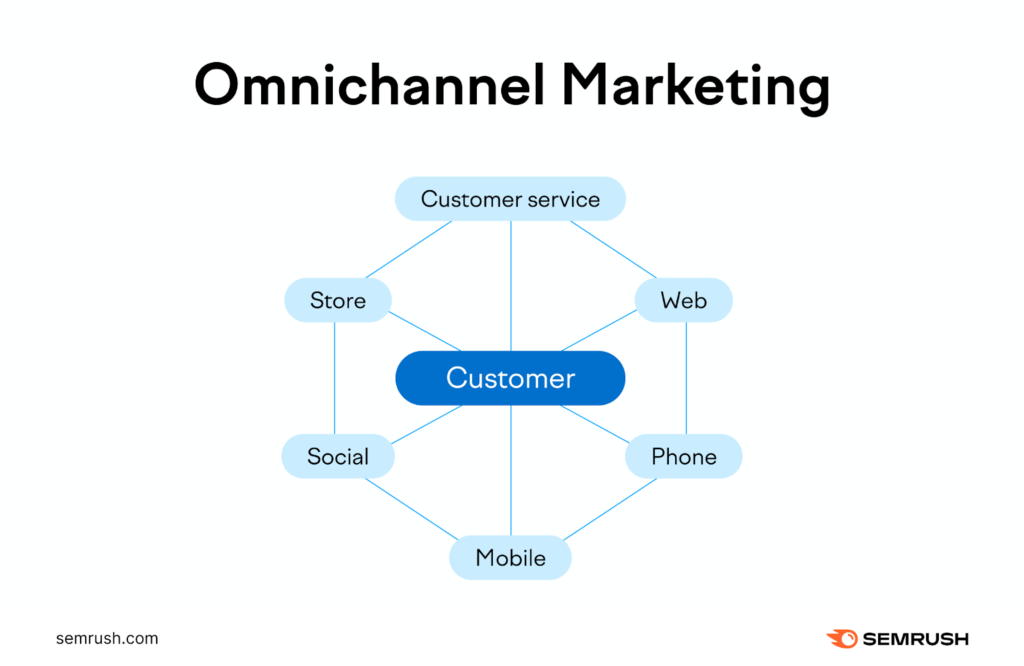Table of Contents
ToggleThe Evolution of Digital Marketing: Trends, Strategies, and Best Practices for 2024
n the fast-paced world of business, staying ahead of the curve is essential. As we approach 2024, the digital landscape continues to evolve, providing marketers with new opportunities and challenges. Digital marketing, once dominated by basic SEO and pay-per-click (PPC) ads, has grown into a complex, multifaceted strategy that integrates numerous tools, techniques, and platforms. From social media to artificial intelligence, the scope of digital marketing is broader than ever before.
In this blog, we’ll explore the key trends shaping digital marketing in 2024, the strategies businesses need to adopt, and the best practices that will help brands thrive in the digital age.
1. AI and Automation: The New Frontier
Artificial Intelligence(AI) has made huge strides over the last few years, and its impact on digital marketing is undeniable. AI is being used to personalize customer experiences, optimize campaigns in real-time, and even generate content. In 2024, AI-powered tools like ChatGPT, predictive analytics, and machine learning algorithms are expected to become even more prevalent. These tools help businesses:
- Automate repetitive tasks (e.g., email marketing, social media posts)
- Personalize marketing messages based on user behavior
- Optimize ad spending with real-time data analysis
For example, AI-driven chatbots are now integral to customer service, providing instant responses and solving customer queries 24/7. Marketers are also using AI for content creation, such as generating copy for blog posts, email campaigns, and social media, making the process faster and more cost-effective.

2. The Rise of Video Content
Video continues to dominate digital marketing, and its importance will only grow in 2024. Whether it’s short-form content on TikTok, live streaming on Facebook, or YouTube tutorials, video provides a powerful way to engage audiences. It is estimated that by 2024, 82% of all online content will be video-based.
Video content is particularly effective for:
- Building brand awareness
- Showcasing products in action
- Connecting with audiences on an emotional level
Short-form videos, in particular, are gaining traction. Platforms like TikTok, Instagram Reels, and YouTube Shorts are thriving with snackable, attention-grabbing videos that drive engagement and create viral moments. If you’re not yet creating video content, 2024 is the time to start.

3. Voice Search Optimization
With the growing use of voice-activated devices like Amazon Echo, Google Assistant, and Apple’s Siri, voice search has become a key consideration for digital marketers. According to recent studies, more than 50% of online searches will be voice-driven by 2024. This has significant implications for SEO strategy.
To optimize for voice search:
- Focus on long-tail keywords and natural language queries (e.g., “Where can I find the best pizza near me?”)
- Enhance your content to answer specific questions directly (i.e., “featured snippets” or “position zero”)
- Improve your website’s loading speed and mobile-friendliness, as voice searches often come from mobile devices
Adapting your SEO strategy to include voice search is critical to capturing this growing segment of search traffic.

4. Social Commerce: Shopping in Social Media
Social media has evolved beyond just a platform for brand promotion—it’s now a full-fledged shopping experience. Social commerce allows users to discover, research, and purchase products directly through social media platforms like Instagram, Facebook, and TikTok.
By 2024, social commerce is expected to be a $1.2 trillion industry, making it a must-have for businesses looking to increase online sales. To tap into this trend:
- Use shoppable posts and ads to turn your social media content into a direct sales channel
- Integrate e-commerce features into your social media platforms (e.g., Instagram Shops, TikTok Shopping)
- Partner with influencers and micro-influencers who can drive product sales through authentic content
Social commerce is a game-changer for businesses that want to meet consumers where they are—on social media—without the friction of leaving the platform to complete a purchase.

5. Privacy and Data Protection
With increasing concerns over privacy and data security, especially with the introduction of regulations like GDPR and CCPA, marketers must be more transparent about how they collect and use data. In 2024, there will be more emphasis on respecting consumer privacy while still delivering personalized experiences.
To build trust and stay compliant:
- Be transparent about data collection practices
- Obtain clear consent from users before collecting their data
- Offer opt-out options and allow users to control their preferences
Privacy-first marketing will not only help you comply with regulations but will also enhance customer loyalty by prioritizing their security and peace of mind.

6.Content Marketing with a Purpose
Content is still king, but in 2024, it’s all about creating high-quality, purpose-driven content. Brands need to focus on content that adds value to their audience—whether it’s solving a problem, answering a question, or inspiring action. Marketers should prioritize:
- Educational content: Tutorials, webinars, and blogs that teach customers something new
- Storytelling: Creating emotional connections through narrative-driven campaigns
- User-generated content: Encouraging customers to share their experiences with your products or services
Quality content that resonates with your audience will not only help you build brand authority but also improve your SEO rankings, drive organic traffic, and generate leads.

7.Influencer Marketing
Influencer marketing continues to be a powerful way to reach specific audiences, but in 2024, it’s evolving beyond the big-name celebrities. Micro-influencers—individuals with a smaller, but highly engaged following—are becoming increasingly valuable. These influencers offer a more authentic connection with their audience, often resulting in better engagement and higher conversion rates.
To get the most out of influencer marketing:
- Identify influencers whose values align with your brand
- Focus on engagement rates, not just follower count
- Leverage user-generated content for more genuine promotion

8.Omnichannel Marketing
Consumers no longer interact with brands on a single platform. They might see your ad on Facebook, visit your website, and then make a purchase through an email promotion. That’s why omnichannel marketing—a seamless and integrated experience across all platforms—will be crucial in 2024.
To implement an omnichannel strategy:
- Ensure consistent messaging across channels (social media, website, email, etc.)
- Use data to track customer behavior across platforms and tailor your messaging accordingly
- Provide personalized experiences based on customer touchpoints
A well-executed omnichannel strategy helps create a cohesive brand experience, which increases customer satisfaction and boosts sales.
